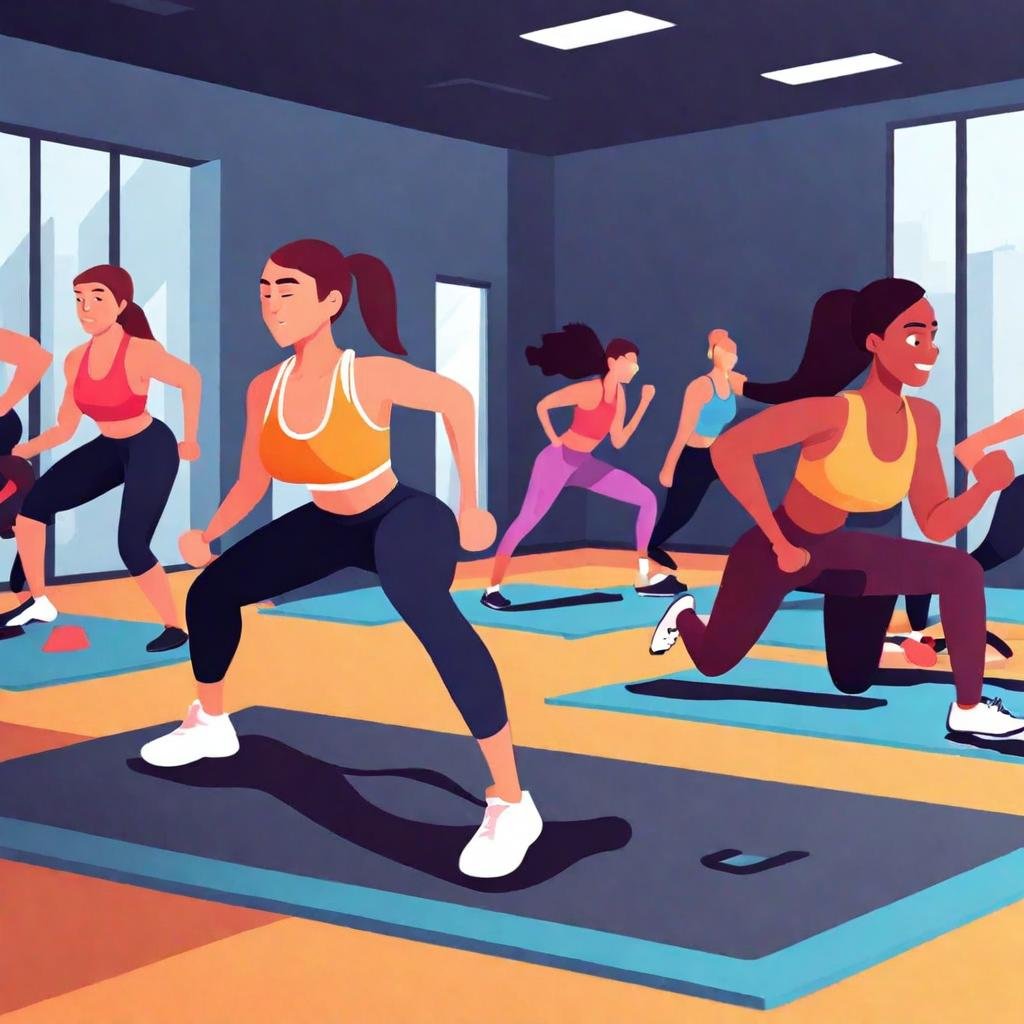It might be difficult to find time for exercise in the fast-paced world of today. Presenting High-Intensity Interval Training (HIIT), a potent exercise technique that guarantees optimal outcomes in the shortest amount of time. When it comes to being healthy and active without having to spend hours at the gym, HIIT is the go-to option for people with hectic schedules. We’ll go over what HIIT is, how it functions, its advantages, and how to begin your own HIIT adventure in this comprehensive guide.
What is HIIT?
A type of cardiovascular exercise called high-intensity interval training, or HIIT, alternates between brief bursts of high activity and intervals of rest or lower-intensity exercise. To raise your heart rate and burn more calories in less time, the secret is to push yourself to the maximum during the high-intensity stages.
How Does HIIT Work?
HIIT workouts usually consist of 20 to 60 seconds of maximal effort exercises, such as bodyweight exercises, cycling, or sprinting, followed by an equal or shorter recovery period. This cycle is done several times, typically resulting in a 20–30 minute workout.
HIIT’s secret weapon is its capacity to maintain an elevated heart rate, which increases fat burning during and after exercise. This is referred to as the “afterburn effect” or excess post-exercise oxygen consumption (EPOC).
Benefits of HIIT
1. Efficient Fat Burning
HIIT has been demonstrated to burn more calories in less time than regular moderate-intensity exercise. This is especially useful for those who want to shed weight and enhance their fitness.
2. Boosts Metabolism
HIIT raises your metabolic rate for hours after exercise, allowing you to burn more calories even while you are at rest. This is due to the EPOC effect, which makes your body work harder to recover to its pre-exercise condition.
3. Improves Cardiovascular Health
HIIT can benefit your heart health by boosting your maximum oxygen intake (VO2 max) while decreasing blood pressure and cholesterol levels. Regular HIIT workouts can help strengthen your heart and lungs, making daily tasks easier.
4. Builds Muscle and Increases Endurance
The mix of high-intensity effort and strength-based activities in HIIT promotes lean muscle hypertrophy. It also improves your endurance, allowing you to complete daily duties more easily and efficiently.
5. Time-Efficient
One of the primary benefits of HIIT is its time efficiency. You can gain significant fitness advantages in a fraction of the time required for regular workouts, making it ideal for individuals with a hectic schedule.
6. No Equipment Needed
Many HIIT workouts rely on body-weight movements, making them a versatile alternative that can be performed anywhere, at any time, without the need for gym equipment.
Getting Started with HIIT
Ready to jump into HIIT? Here’s how to get started:
1. Choose Your Exercises
HIIT can be personalized with a variety of workouts. Here are a few popular ones:
Burpees: They are a full-body movement that combines squats, jumps, and push-ups.
Jumping Jacks: A classic cardio exercise that gets your heart racing.
Mountain Climbers: A core-strengthening activity that resembles ascending a mountain.
Sprinting: It is the practice of running at top speed across short distances.
High Knees: Running in place with your knees up towards your chest.
2. Create a Routine
Begin with a warm-up to ready your muscles. Then select an HIIT workout plan, such as:
20 seconds of activity and 10 seconds of relaxation (Tabata style).
30 seconds of activity and 30 seconds of rest.
One minute of exercise and one minute of rest.
Repeat each exercise for 15 to 30 minutes, depending on your fitness level.
3. Warm Up and Cool Down
Always start with a 5-10 minute warm-up to prepare your muscles and avoid injury. End with a cool-down phase to gradually lower your heart rate and stretch your muscles.
4. Stay Consistent
Consistency is necessary to see results. Aim for 2-3 HIIT sessions each week, with a minimum of 24 hours between workouts to allow your muscles to recuperate.
5. Listen to Your Body
HIIT is an intense workout. Pay attention to how your body feels and try not to push yourself too hard, especially when starting off. Gradually increase the intensity and duration of your workouts as you gain fitness.
Sample HIIT Workout Plan
Here’s an easy 20-minute HIIT workout to try:
- Warm-Up (5 minutes): Jog in place, arm circles, leg swings
- Burpees (30 seconds): Explosive full-body movement
- Rest (30 seconds)
- High Knees (30 seconds): Fast-paced running in place
- Rest (30 seconds)
- Mountain Climbers (30 seconds): Core and cardio combo
- Rest (30 seconds)
- Jumping Jacks (30 seconds): Cardio classic
- Rest (30 seconds)
- Sprints (30 seconds): Maximum effort running
- Rest (30 seconds)
Repeat the cycle 2-3 times, followed by a 5-minute cool down.
Common Mistakes to Avoid
- Skipping the Warm-Up: Jumping straight into high-intensity exercise can lead to injury. Always warm up first.
- Overtraining: HIIT is effective, but it’s also demanding. Ensure you’re getting enough rest and recovery.
- Poor Form: Performing exercises with improper form can lead to injuries. Focus on quality over quantity.
- Ignoring Nutrition: Pair your HIIT workouts with a balanced diet to support your fitness goals and recovery.
High-Intensity Interval Training is a quick and effective technique to increase your fitness, burn fat, and enhance your overall health. With its variety and adaptability, HIIT can fit into even the most hectic schedules. So, lace on your sneakers, get moving, and enjoy the benefits of HIIT now!









